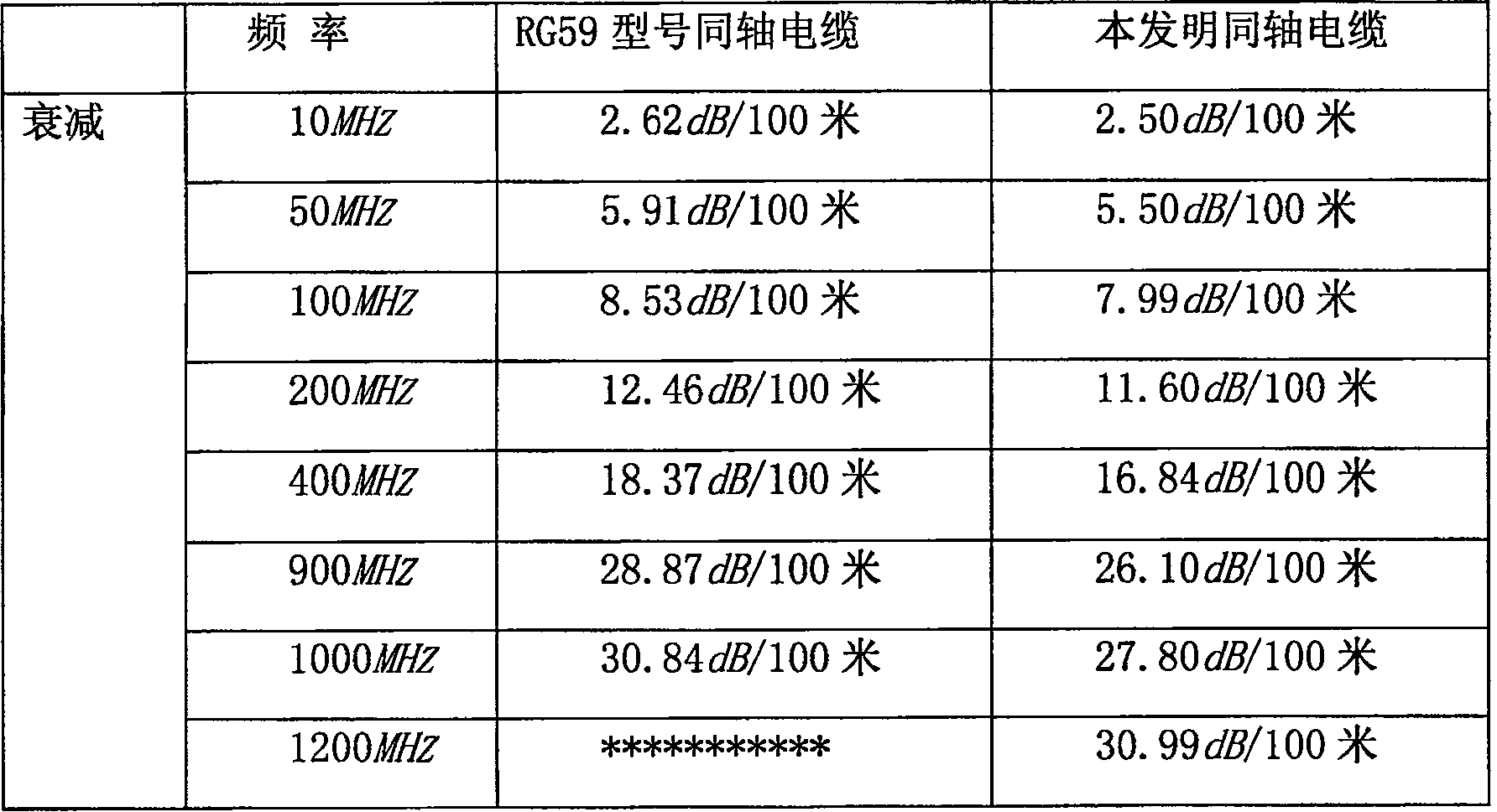Method for manufacturing coaxial cable insulated layer and foam material and material processing technology
A coaxial cable and insulating layer technology, applied in the direction of conductor/cable insulation, etc., can solve the problems of reduced voltage standing wave performance, increased cable attenuation, unevenness, etc., to reduce voltage standing wave ratio, reduce signal attenuation, good uniformity
- Summary
- Abstract
- Description
- Claims
- Application Information
AI Technical Summary
Problems solved by technology
Method used
Image
Examples
Embodiment 1
[0022] Raw materials: 100 parts of FEP (capacity flow index MFI is 4) raw materials,
[0023] Nucleating agent masterbatch: 0.8 parts of boron fluoride (BF4) (nanomaterials below 0.09 microns);
Embodiment 2
[0025] Raw materials: 100 parts of FEP (capacity flow index MFI is 8) raw materials,
[0026] Nucleating agent masterbatch: 0.9 parts of silicon fluoride (SiF4) (nanomaterials below 0.07 microns);
[0027] Antioxidant: Antioxidant 1010 0.5 parts,
[0028] Anti-copper agent: 0.3 parts of OABH.
Embodiment 3
[0030] Raw materials: FEP (capacity flow index MFI is 6) pellets 100 parts,
[0031] Nucleating agent masterbatch: 0.3 parts of silicon nitride (SiN) (nanomaterials below 0.06 microns);
[0032] Anti-copper agent: 0.4 parts of OABH.
PUM
 Login to View More
Login to View More Abstract
Description
Claims
Application Information
 Login to View More
Login to View More - R&D
- Intellectual Property
- Life Sciences
- Materials
- Tech Scout
- Unparalleled Data Quality
- Higher Quality Content
- 60% Fewer Hallucinations
Browse by: Latest US Patents, China's latest patents, Technical Efficacy Thesaurus, Application Domain, Technology Topic, Popular Technical Reports.
© 2025 PatSnap. All rights reserved.Legal|Privacy policy|Modern Slavery Act Transparency Statement|Sitemap|About US| Contact US: help@patsnap.com

